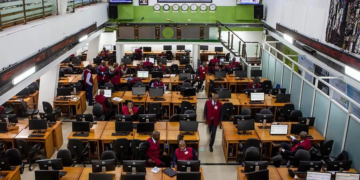The Rise of the New Consumer
The behavior model, initially a response to economic hardship, has now solidified into a permanent change in consumer habits, claims The Conversation’s recent research. The retail segment refers to this phenomenon as the rise of the “new consumer” — a demographic marked by value consciousness, digital savviness, and a preference for experiences over material goods.
According to a survey carried out by Promocodius — a site with up-to-date promotional codes, U.S. consumers are increasingly prioritizing savings, with nearly half of survey participants willing to download brand apps for loyalty promotions and 70% joining loyalty programs for free shipping benefits.
In Pursuit of More Cost-Effective Alternatives
The trend is clear: consumers are seeking more cost-effective alternatives and are less inclined to remain loyal to specific brands. The use of coupons such as a free Flixbus voucher code has surged, with 45% of respondents in the Promocodius survey having used them in the past six months. This indicates a growing preference for sites that offer current promotional codes and discounts which is becoming essential for savvy shoppers looking to maximize their savings.
Online Platforms for Comparing Prices and Discounts Are More Popular Than Ever
Digital tools play a crucial role in this new consumer behavior. Online platforms for comparing prices and reading reviews are more popular than ever, enabling consumers to make well-informed purchasing decisions. This digital fluency allows them to navigate the marketplace efficiently, ensuring they get the best value for their money. Despite the reliance on online shopping, the physical store experience still holds significant value. Many consumers prefer to see, touch, and try items before purchasing, with 59% visiting stores for this purpose and 57% to avoid shipping hassles.
Moreover, human interaction remains important in the post-purchase journey. Consumers value in-person assistance for returns, refunds, and addressing product concerns, highlighting the continued relevance of brick-and-mortar stores. However, these stores are transforming from mere transaction points to vibrant hubs of brand experience. For instance, the Nike store in Manhattan offers a basketball half-court, a soccer trial area, and a customization shoes bar, providing an engaging and interactive shopping environment.
The Shift towards Experiential Spending
The shift towards experiential spending is another hallmark of the new consumer. There is a growing inclination to invest in travel, dining, and unique activities over accumulating material possessions.
Consumers are looking for meaningful and memorable experiences that offer greater satisfaction than physical goods. This trend is evident in the increased demand for travel vouchers, deals, and more opportunities to save on a trip including cheaper eating-out options and discounts on tours and excursions.
Retailers Have to Adapt Promptly to the New Consumer’s Needs
Retailers must adapt to these changing consumer preferences by leveraging loyalty programs that offer personalized rewards and exclusive deals. Integrating mobile apps that provide real-time notifications on deals and events, offering exclusive in-store experiences for members, and using data analytics to tailor rewards to individual preferences can significantly enhance consumer engagement and retention.
The rise of the “new consumer” presents both challenges and opportunities for retailers. By focusing on value, leveraging digital tools, and enhancing experiential offerings, businesses can thrive in this new retail landscape. The future of retail lies in creating dynamic, personalized, and interactive shopping experiences that go beyond mere transactions, catering to a consumer base that values savings and meaningful engagement over brand loyalty.











